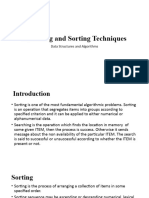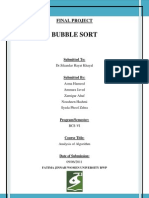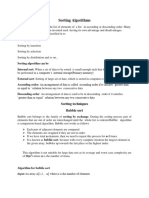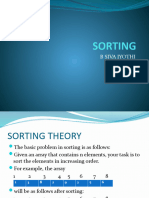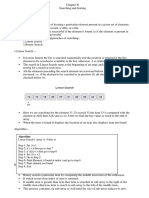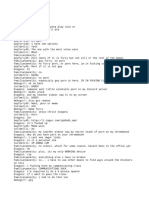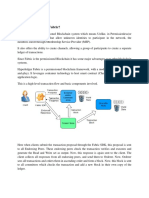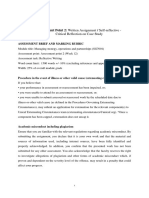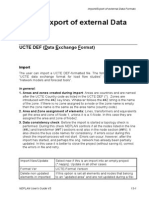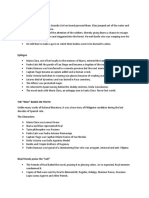0% found this document useful (0 votes)
13 views4 pagesSearching and Sorting
The document discusses searching and sorting algorithms, highlighting their importance in computer science for managing large data sets. It explains various algorithms such as linear search, binary search, and sorting methods like bubble sort, quicksort, and merge sort, along with their time and space complexities. Additionally, it emphasizes the need to choose the appropriate algorithm based on specific use cases and data characteristics.
Uploaded by
dhiru1014Copyright
© © All Rights Reserved
We take content rights seriously. If you suspect this is your content, claim it here.
Available Formats
Download as PDF, TXT or read online on Scribd
0% found this document useful (0 votes)
13 views4 pagesSearching and Sorting
The document discusses searching and sorting algorithms, highlighting their importance in computer science for managing large data sets. It explains various algorithms such as linear search, binary search, and sorting methods like bubble sort, quicksort, and merge sort, along with their time and space complexities. Additionally, it emphasizes the need to choose the appropriate algorithm based on specific use cases and data characteristics.
Uploaded by
dhiru1014Copyright
© © All Rights Reserved
We take content rights seriously. If you suspect this is your content, claim it here.
Available Formats
Download as PDF, TXT or read online on Scribd
/ 4

